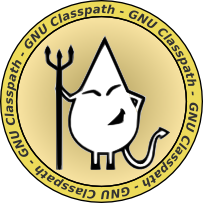
Java is a high-level, class-based, object-oriented programming language that is designed to have as few implementation dependencies as possible. It is a general-purpose programming language intended to let programmers write once, run anywhere (WORA), meaning that compiled Java code can run on all platforms that support Java without the need to recompile. Java applications are typically compiled to bytecode that can run on any Java virtual machine (JVM) regardless of the underlying computer architecture. The syntax of Java is similar to C and C++, but has fewer low-level facilities than either of them. The Java runtime provides dynamic capabilities that are typically not available in traditional compiled languages.

A Java virtual machine (JVM) is a virtual machine that enables a computer to run Java programs as well as programs written in other languages that are also compiled to Java bytecode. The JVM is detailed by a specification that formally describes what is required in a JVM implementation. Having a specification ensures interoperability of Java programs across different implementations so that program authors using the Java Development Kit (JDK) need not worry about idiosyncrasies of the underlying hardware platform.
Bytecode is a form of instruction set designed for efficient execution by a software interpreter. Unlike human-readable source code, bytecodes are compact numeric codes, constants, and references that encode the result of compiler parsing and performing semantic analysis of things like type, scope, and nesting depths of program objects.
In computing, aspect-oriented programming (AOP) is a programming paradigm that aims to increase modularity by allowing the separation of cross-cutting concerns. It does so by adding behavior to existing code without modifying the code itself, instead separately specifying which code is modified via a "pointcut" specification, such as "log all function calls when the function's name begins with 'set'". This allows behaviors that are not central to the business logic to be added to a program without cluttering the code core to the functionality.
The GNU Compiler for Java (GCJ) is a discontinued free compiler for the Java programming language. It was part of the GNU Compiler Collection.
AspectJ is an aspect-oriented programming (AOP) extension created at PARC for the Java programming language. It is available in Eclipse Foundation open-source projects, both stand-alone and integrated into Eclipse. AspectJ has become a widely used de facto standard for AOP by emphasizing simplicity and usability for end users. It uses Java-like syntax, and included IDE integrations for displaying crosscutting structure since its initial public release in 2001.

GNU Classpath is a free software implementation of the standard class library for the Java programming language. Most classes from J2SE 1.4 and 5.0 are implemented. Classpath can thus be used to run Java-based applications. GNU Classpath is a part of the GNU Project. It was originally developed in parallel with libgcj due to license incompatibilities, but later the two projects merged.

Apache Tapestry is an open-source component-oriented Java web application framework conceptually similar to JavaServer Faces and Apache Wicket. Tapestry was created by Howard Lewis Ship, and was adopted by the Apache Software Foundation as a top-level project in 2006.
Java Card is a software technology that allows Java-based applications (applets) to be run securely on smart cards and more generally on similar secure small memory footprint devices which are called "secure elements" (SE). Today, a secure element is not limited to its smart cards and other removable cryptographic tokens form factors; embedded SEs soldered onto a device board and new security designs embedded into general purpose chips are also widely used. Java Card addresses this hardware fragmentation and specificities while retaining code portability brought forward by Java.
In software engineering, profiling is a form of dynamic program analysis that measures, for example, the space (memory) or time complexity of a program, the usage of particular instructions, or the frequency and duration of function calls. Most commonly, profiling information serves to aid program optimization, and more specifically, performance engineering.
Javassist is a Java library providing a means to manipulate the Java bytecode of an application. In this sense Javassist provides the support for structural reflection, i.e. the ability to change the implementation of a class at run time.
The Byte Code Engineering Library (BCEL) is a project sponsored by the Apache Foundation previously under their Jakarta charter to provide a simple API for decomposing, modifying, and recomposing binary Java classes. The project was conceived and developed by Markus Dahm prior to officially being donated to the Apache Jakarta foundation on 27 October 2001.

Java is a set of computer software and specifications that provides a software platform for developing application software and deploying it in a cross-platform computing environment. Java is used in a wide variety of computing platforms from embedded devices and mobile phones to enterprise servers and supercomputers. Java applets, which are less common than standalone Java applications, were commonly run in secure, sandboxed environments to provide many features of native applications through being embedded in HTML pages.
Haxe is a high-level cross-platform programming language and compiler that can produce applications and source code for many different computing platforms from one code-base. It is free and open-source software, released under the MIT License. The compiler, written in OCaml, is released under the GNU General Public License (GPL) version 2.
In computer science, ahead-of-time compilation is the act of compiling an (often) higher-level programming language into an (often) lower-level language before execution of a program, usually at build-time, to reduce the amount of work needed to be performed at run time.

The Da Vinci Machine, also called the Multi Language Virtual Machine, was a Sun Microsystems project aiming to prototype the extension of the Java Virtual Machine (JVM) to add support for dynamic languages.

An aspect weaver is a metaprogramming utility for aspect-oriented languages designed to take instructions specified by aspects and generate the final implementation code. The weaver integrates aspects into the locations specified by the software as a pre-compilation step. By merging aspects and classes, the weaver generates a woven class.
This article compares the application programming interfaces (APIs) and virtual machines (VMs) of the programming language Java and operating system Android.
Java bytecode is the instruction set of the Java virtual machine (JVM), crucial for executing programs written in the Java language and other JVM-compatible languages. Each bytecode operation in the JVM is represented by a single byte, hence the name "bytecode", making it a compact form of instruction. This intermediate form enables Java programs to be platform-independent, as they are compiled not to native machine code but to a universally executable format across different JVM implementations.

WebAssembly defines a portable binary-code format and a corresponding text format for executable programs as well as software interfaces for facilitating interactions between such programs and their host environment.







